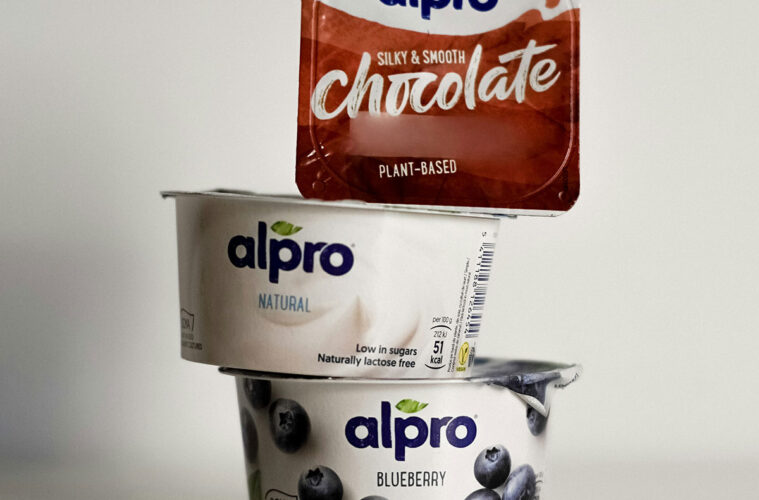Yoghurt is a creamy, tangy dairy product enjoyed for its versatility and health benefits. Consumers appreciate it for its high protein, calcium, and probiotics. It can be eaten plain, with fruits and honey, or used in recipes like smoothies and desserts. Various types, such as plain and Greek-style, cater to different tastes and preferences.
Yoghurt packaging is crucial for maintaining its freshness and appeal. Consumers often encounter yoghurt in various forms, including cups, bottles, and tubes, each designed for convenience and preservation. Proper packaging protects the yoghurt from contamination, extends its shelf life, and provides important nutritional information. The underground world of industrial processes of yoghurt production is what consumers are not familiar with and they hardly have the interest of studying their secrets. However, the processing and packaging methods for yoghurt play key and essential roles in ensuring the healthy consumption of yoghurt by consumers.
Aseptic Forming, Filling and Sealing for Yoghurt Products Creates Sanitary Primary Packaging
Aseptic packaging is a process where both the product and the packaging are sterilised separately and then combined in a sterile environment. This method ensures that the product remains free from harmful bacteria and other microorganisms without the need for preservatives.
In the case of yoghurt, aseptic packaging ensures safety, freshness, and convenience. It keeps yoghurt free from harmful bacteria, extends shelf life, and allows storage at room temperature before opening, making it easier to transport and store.
A typical industrial equipment design for this purpose is the aseptic yoghurt form-fill-seal machine An Aseptic Form Fill Seal (FFS) machine is capable of providing sterilisation of packaging materials, forming containers, aseptically filling them with yoghurt, and hermetically sealing them in a sterile environment. It includes CIP/SIP systems for automated cleaning and sterilisation, and advanced control systems for consistent quality.
Aseptic FFS machine extends yoghurt’s shelf life without refrigeration until opened and allows safety by preventing contamination, which is the unique advantage compared to the rest of the filling and sealing machines.
Sleeving & Cartoning Machines Provide Further Layer of Protection
Though form-fill-seal cups produced from the upstream machine are already ready for distribution, display and sale among groceries, brand manufactures tend to apply further layer of secondary packaging around them to both protect the yoghurt containers as well as to provide further surface of marketing and brand attraction.
The kay factors that make the difference here are cartoning and sleeving which can provide additional layers of protection and offer significant advantages for branding and marketing in yoghurt packaging. Cartoning and sleeving, as options of secondary packaging, add extra protection and are essential for branding and marketing in yoghurt packaging. They safeguard containers from physical harm, light, and temperature changes, preserving the product’s quality. Beyond this advantage, these packaging methods provide ample space for branding, which boosts shelf visibility and allows for detailed product information and appealing graphics. Typical industrial packaging machinery produced for these purposes are those manufactured by ELITER Packaging Machinery who is a growing brand in the field of yoghurt packaging line and has successful installations with references and clients from both Europe and APAC region.
Case Packing is Indispensable for Distribution along Supply Chain
Corrugated case packaging is vital for yoghurt distribution, especially within the supply chain or cold chain. It provides robust protection against physical damage during transportation and handling, ensuring the yoghurt reaches consumers in optimal condition.
The strength and durability of corrugated cases help maintain the integrity of the cold chain by insulating against temperature fluctuations, preserving the yoghurt’s freshness and safety. Additionally, these cases are stackable and space-efficient, facilitating efficient storage and transport. Their recyclability also supports sustainability efforts, making them an eco-friendly choice for yoghurt packaging.
Ensuring Yoghurt Quality and Safety Through Packaging
Yoghurt packaging and processing are essential for maintaining product quality and safety throughout the supply chain. Primary packaging protects yoghurt from contamination and spoilage, while secondary methods like cartoning and sleeving add extra protection and branding opportunities. Corrugated case packaging ensures robust protection and maintains the cold chain during distribution. Together, these strategies keep yoghurt healthy, uncontaminated, and appealing to consumers from production to purchase.

